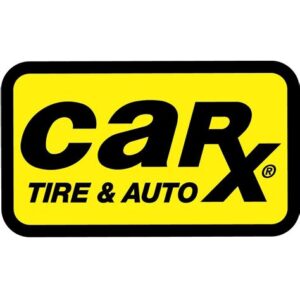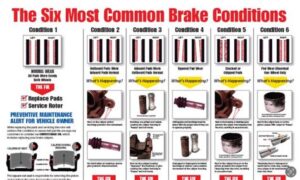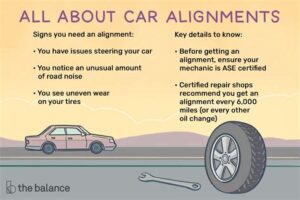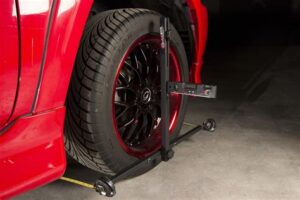Learn about wheel alignment, its frequency, symptoms of misalignment, and the benefits of regular maintenance for optimal vehicle performance.Maintaining your vehicle’s health goes beyond routine oil changes and tire rotations; one crucial aspect often overlooked is wheel alignment. Proper alignment ensures your car drives smoothly, improves tire longevity, and enhances fuel efficiency. However, many drivers wonder: how often should you schedule an alignment? In this blog post, we’ll explore the ins and outs of wheel alignment, including the factors that affect how frequently you should have it checked. We’ll also discuss manufacturer-recommended intervals, key signs of misalignment to watch for, and the numerous benefits of keeping your alignment in check. By understanding these elements, you can help ensure a safer, more efficient ride every time you hit the road.
Understanding Wheel Alignment
Wheel alignment is a crucial maintenance procedure that ensures your vehicle’s wheels are set to the best operating angles. Proper alignment can enhance tire longevity, improve fuel efficiency, and provide a more comfortable driving experience. When your wheels are correctly aligned, they maintain optimal contact with the road, allowing for better traction and handling.
There are three primary aspects of wheel alignment: camber, caster, and toe. Camber refers to the angle of the wheels when viewed from the front of the vehicle. A positive camber means the top of the tire is tilted outward, while a negative camber indicates it is tilted inward. Caster is the angle of the steering pivot that affects stability and steering effort. Lastly, toe measures the direction the tires point relative to the centerline of the vehicle. Proper adjustments of these angles can greatly enhance your vehicle’s performance.
Failing to maintain proper alignment can cause uneven tire wear, leading to frequent tire replacements and more significant safety risks on the road. Moreover, you may experience symptoms such as steering wheel vibration, pulling to one side, or a crooked steering wheel. Therefore, understanding the importance of wheel alignment is essential for every vehicle owner to ensure optimal performance and safety.
Factors Affecting Alignment Frequency
When it comes to the frequency of getting a wheel alignment, several factors play a significant role. Understanding these can help you maintain optimal vehicle performance and safety. Here are some key considerations:
- Driving Conditions: If you frequently drive on rough roads, potholes, or uneven surfaces, your vehicle may require more frequent alignments.
- Type of Vehicle: Different types of vehicles have varying alignment needs. For example, trucks or SUVs may experience misalignment more often compared to sedans.
- Usage: If you often carry heavy loads or tow trailers, it can put additional stress on your vehicle’s suspension and alignment.
- Regular Maintenance: Vehicles that undergo regular maintenance are less likely to require frequent alignments. Keeping up with tire rotations and checking tire pressure plays a critical role.
In addition, changes in weather conditions can also impact alignment frequency. For instance, frequent exposure to extreme temperatures or heavy rainfall may affect the suspension system of your vehicle.
Lastly, it’s essential to monitor your driving habits. Sudden stops, sharp turns, or aggressive driving can all contribute to misalignment, leading to a need for more frequent adjustments.
Being proactive about these factors can save you from premature tire w
Manufacturer’s Recommended Intervals
When it comes to ensuring optimal performance and safety of your vehicle, understanding the manufacturer’s recommended intervals for wheel alignment is crucial. These guidelines can vary significantly between different manufacturers and vehicle types. Generally, most manufacturers suggest getting a wheel alignment every 6,000 to 10,000 miles or at least once a year, but this can depend on various driving conditions and habits.
In addition to mileage, severe driving conditions may necessitate more frequent alignments. Factors such as frequent driving on rough roads, potholes, speed bumps, or even aggressive driving can impact the alignment. Some manufacturers even recommend inspection during routine maintenance appointments, particularly if you notice any signs of misalignment.
It’s important to always consult your vehicle’s owner’s manual or contact your dealer for the specific mileage and conditions that pertain to your car. Adhering to these manufacturer’s guidelines not only prolongs the life of your tires but also enhances y
Signs of Misalignment to Look For
Maintaining proper wheel alignment is essential for the safety and performance of your vehicle. Unfortunately, misalignment can occur due to various factors such as potholes, curb strikes, or even normal wear and tear. Understanding the signs of misalignment can help you address issues before they lead to costly repairs.
Here are some common symptoms of misalignment that you should be aware of:
- Uneven Tire Wear: If you notice that your tires are wearing unevenly, this can be a major indicator that your alignment is off. Check for excessive wear on the inner or outer edges of the tires.
- Vehicle Pulling to One Side: If your car pulls to the left or right while driving on a straight road, it’s a strong sign of misalignment that needs to be addressed.
- Steering Wheel Off-Center: A steering wheel that is not centered when driving straight can indicate that the wheels are misaligned. This could also lead to an uncomfortable driving experience.
- Vibrations While Driving: If you experience unusual vibrations in the steering wheel or the vehicle itself, this can also suggest that the alignment is not correct.
Being proactive about identifying these signs of misalignment can help you ensure a safer and more-efficient driving experience. If you notice any of these symptoms, it may be time to get a professional alignment check for your vehicle.
Benefits of Regular Alignment Maintenance
Regular wheel alignment maintenance is not just a matter of comfort; it’s essential for the overall performance and safety of your vehicle. Ensuring that your wheels are aligned correctly can lead to several significant benefits, which we will explore below.
1. Improved Tire Life: One of the primary benefits of regular alignment maintenance is the increased lifespan of your tires. When your wheels are properly aligned, they wear evenly, helping to extend the life of your tires and save you money in the long run.
2. Enhanced Fuel Efficiency: Proper alignment can also lead to better fuel efficiency. Misaligned wheels can cause your vehicle to work harder, thus consuming more fuel. Regular maintenance can help ensure that your vehicle runs efficiently.
3. Increased Safety: Driving with misaligned wheels can be dangerous. Regular alignment checks contribute to better handling and steering response, which increases your safety on the road. A vehicle that is aligned properly is less likely to pull to one side, providing a more controlled and safer driving experience.
4. Smoother Ride: A well-aligned vehicle offers a smoother ride. Misalignment can lead to vibrations and an uncomfortable driving experience, while regular alignment maintenance will help you enjoy a more pleasant journey.
Incorporating wheel alignment checks into your regular vehicle maintenance routine will yield numerous benefits including enhanced safety, reduced operating costs, and a more enjoyable driving experience.
Frequently Asked Questions
What is a wheel alignment?
A wheel alignment is the adjustment of a vehicle’s suspension, which connects a vehicle to its wheels. Proper alignment ensures that the vehicle drives straight and tires wear evenly.
How often should I get a wheel alignment?
It’s generally recommended to get a wheel alignment every 6,000 to 10,000 miles, or whenever you notice signs of misalignment like uneven tire wear or your vehicle pulling to one side.
What are the signs that my car needs an alignment?
Signs that your car may need an alignment include uneven tire wear, your vehicle pulling to one side, a crooked steering wheel when driving straight, and vibrating steering wheel.
Can hitting a pothole affect alignment?
Yes, hitting a pothole can cause your wheels to become misaligned. It can jolt the suspension and lead to alignment issues, necessitating a check.
What happens if I don’t get my car aligned?
If you neglect wheel alignment, it can lead to uneven tire wear, reduced fuel efficiency, and compromised handling, ultimately costing you more in tire replacements and repairs.
Is a wheel alignment the same as a wheel balancing?
No, wheel alignment and wheel balancing are different. Alignment adjusts the angles of the wheels, while balancing ensures that the wheels are evenly weighted around the axle.
Can a rough road affect my car’s alignment?
Absolutely. Driving on rough or uneven roads can develop misalignment issues due to the impact on the vehicle’s suspension, making it essential to check your alignment regularly.





